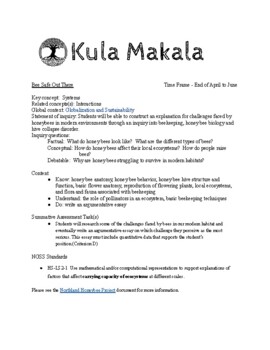IB MYP 5 Bee Safe Out There
- PDF
Description
Are you looking for a relevant and exciting Life Science Unit for either an International Baccalaureate or Traditional High School Biology class? This unit will fit that bill because it addresses one of the biggest challenges in our interconnected society. Bees are one of the most important pollinators in the world. Our modern agricultural society depends on them in order to grow many of the crops that our society depends upon. This unit will explore the biology of honey bees and create opportunities for students to engage in original inquiry surrounding the management of an apiary and surrounding Hive Collapse Disorder. Bees are grown in temperate climates around the world and this unit could easily be adapted for your local region.
In this unit, you will find a complete set of lesson plans that is backwards designed toward a writing assessment that utilizes the IB MYP Criterion D. This unit is also designed to meet the NGSS Science Standard HS-LS2-1. There are a number of formative assessments included in this unit that include grading rubrics and task specific guidelines. Most importantly, if you are interested in started an apiary at your school, there is a set of directions and liability mitigation strategies included in this unit.





